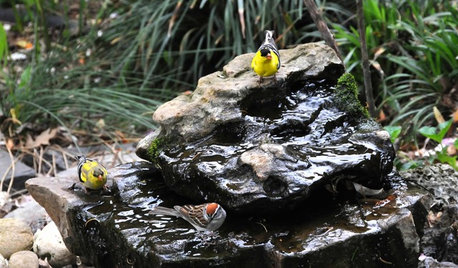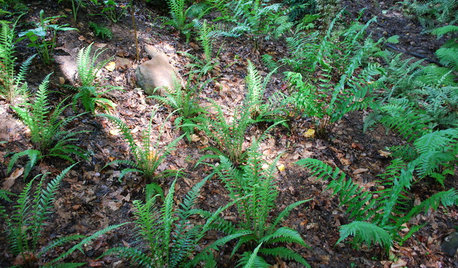In celebration of the discovery of Ivory-billed woodpeckers, I offer this wholly fictious account of the only known extinct snake in North America. Prehaps, others know of extinct species of reptiles and amphibians.
THE WOOPECKER SNAKE
The only North American snake known to have gone extinct during the last century was a southeastern species known as the woodpecker snake ( Oakmantis reparti Franklini).
Last seen in 1808 by Franklin County, Tennessee naturalist and Revolutionary War hero, R.D. Macferd, it was also known as the Tree Hole snake, Vine viper, Mock Orange snake and Wild Moss lizard.
There is no explanation for the final common name.
First described in 1787 by Benjamin Franklin (ergo "Franklini"), Oakmanti Reparti was described by one of the Declaration of Independence authors as a curious snake of approximately four feet, this hideous creature slinks from rotted tree cavity to squirrel hole dining on young birds that inhabit such locales. It is almost uniformly blue with a bright red head and a red stripe that runs the length of its scaly body which terminates in a tail the color of spring leaves."
Franklin reported seeing the snake in what is now Blunt County, Alabama.
"It was on a squirrel hunt that I first encountered this serpent. After firing at a large Fox squirrel which had scampered onto the side of a dead tree the squirrel rushed to the hole but balked at going in. Apparently disturbed from the sound of the discharge and the rattle of the shot striking the dead wood, the snake emerged from the hole which was about 20-feet up the side of the tree. At first I thought it a Red-headed woodpecker, but you can imagine my surprise when about four feet of blue body tipped with green slithered out and up and then disappeared into a hole higher up."
FranklinÂs host, Col.Matthew Sanborn (of Kings Mountain fame), suggested that they depart and return with saws to cut down the tree and get a closer look at the reptile.
"This we did. When the tree hit the ground it split asunder leaving the snake perfectly exposed to our gazes. Realizing its predicament, the serpent attempted to flee. But seeing no place to go, it turned and stood its ground."
FranklinÂs described the continuing encounter:
"The disturbed snake coiled itself like a spring and, with a terrible hissing and clicking of its teeth, lunged forward at Sanborn," Franklin wrote in what is known as his "Alabama Diary" (Now on display at the Library of Congress).
"If not for old SanÂs nimble steps the serpent would have certainly done considerable damage," Franklin wrote. "The snake was quickly dispatched by one of SanbornÂs sons who had joined us in our endeavor."
The snake measured just two inches short of five feet and was as "stout as a walking cane"
"Upon dissecting the reptile with out knives we discovered the snakeÂs unfortunate victims - three partially digested woodpecker fledglings," Franklin continued.
Following FranklinÂs descriptions there were scattered reports of the snake in various diaries of naturalists.
The snake was last seen by Macferd when a storm blew over a large, dead Black Walnut tree at his Blunt County homestead.
"The most curious of all reptiles I have seen in Dixie emerged from a hole near the first main forks," Macferd wrote in his 1810 "Blunt County Wanderings. "Its armor was the blue of a dark winter sky and its head red as a strawberry. The tail was a bright green."
The only known image of the snake was painted by the famous naturalist/artist James Audubon. It is believed he encountered the snake in his outings to paint birds.
But the painting, like the snake, is now extinct. Following AudubonÂs death in 1851, his wife, Emily, became a religious convert to a sect of profoundly fundamentalist Baptists. The minister of her small church visited her one day and upon seeing the painting of the snake urged her to destroy it.
"Your poor, unfortunate husband has captured the likeness of the very serpent that tempted Eve," the preacher declared. "The red head reminds of the apple which the evil serpent used."
Famous American herpetologist Raymond Ditmars mentioned the Woodpecker snake in his first draft of "Reptiles of North America," but his publishers urged him to remove the reference.
Ditmars did examine in 1921 what was reported to be a mummified specimen of the snake in the hands of one Jonathan L. Bontakk of Jackson, Mississippi.
"It was a dead Black racer adorned with some old house paint," Ditmars told the Jackson Chronicle newspaper.
Bontakk sued Ditmars for that coment but the case was dropped when Bontakk could not produce the snake carcass in court for the judge to see.













northernIL
fairy_toadmother
Related Discussions
Woodpeckers In The Garden
Q
Pileated woodpeckers
Q
Ivory-billed Woodpecker, Herp Comparison
Q
Woodpeckers, hole in house, how to rid...
Q